Discovering common species of spiders in your Aurora, CO, home can be unnerving. That's why knowing how to respond, and being able to identify them, is crucial to keep these creepy crawlies under control.
Five Colorado arachnids, in particular, tend to find their way indoors.
1. Jumping Spiders
Jumping spiders can leap up to 6.3 inches, and are known for their huge, googly eyes. They're also very fuzzy. They don't spin webs, and they hunt during the day. They build a sac-like retreat where they can hide when they're ready to sleep at night.
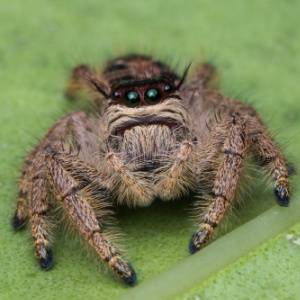
- Are these jumpers dangerous to family members and pets? While a jumping spider can bite if they sense danger, the bites tend to be mild and harmless.
- Where do they hide in my house? Jumping spiders like to hide in dark, quiet places. That means closets, attics, crawl spaces, and, unfortunately, sometimes the interior of the shoes that don't get worn very often.
- What do jumping spiders eat? They eat ants and fruit flies or any bug that is equal or smaller in size to them.
2. Hobo Spiders
The hobo spider is a small, brown, or rust-colored spider sporting a herringbone pattern on the abdomen. While it's generally rare to see them inside the house, it's not unheard of here in Colorado.
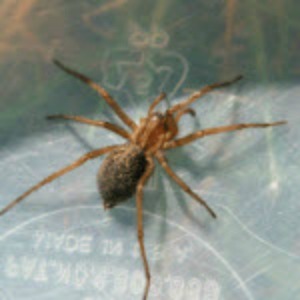
- Are they dangerous to my family and pets? Hobo spider bites are described as being "medically significant." While they only attack when accidentally crushed or squeezed, their bites can cause necrosis at the bite site, and you should seek medical attention if you think you've been bitten by one of this species.
- Where do they hide in my house? Hobo spiders create funnel-shaped webs, which you'll find between planters or near the legs of your furniture.
- What do hobo spiders eat? They eat just about any insect you might find in the home, including ants and roaches.
3. Wolf Spiders
Wolf spiders can trigger arachnophobia like nobody's business. They're some of the biggest spiders you're likely to see in America! They are also highly likely to startle you in your home, as they're highly visible as they chase down their prey. They tend to be dark, gray, brown, or tan.
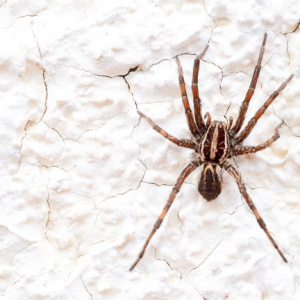
- Are wolf spiders dangerous to families and pets? While you might feel like you're having a heart attack when one surprises you, the truth is they're not very dangerous at all. When threatened, they're more likely to posture by waving their front legs at you than they are to bite. Nevertheless, their bites can still cause redness and swelling.
- Where do they hide in my house? Wolf spiders almost never hide! You'll see them scurrying across the walls, charging across floors, or hanging out on tables as if they can't imagine why you might ever have a problem with their presence. Subtle, they're not.
- What do wolf spiders eat? They mostly eat insects or other the smaller of their own species. Unfortunately, their slightly cannibalistic tendencies don't do much to control infestations.
4. Black Widow Spiders
You may be surprised to learn that black widow spiders are common in Aurora. They're usually associated with the hotter climates of the Southern States, but homeowners find them in their garages and interiors all the same. The females, with their distinct red hourglass pattern on a shiny black body, are easy to spot. Male black widows are harder, as they're smaller and are pale brown.
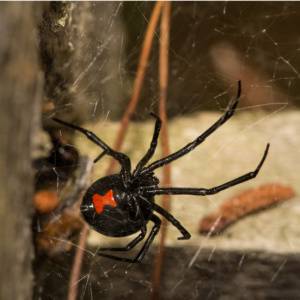
- Are black widow spiders dangerous to my family and pets? Yes. Both the males and the females are venomous. The bite can cause severe muscle pain, cramping, tenderness and burning, nausea, and vomiting. The pain can spread. Seek medical attention for potential complications or an anti-venom.
- Where do black widow spiders hide in my house? They like garages, attics and basements. They also like storage closets. They want a quiet, dark place where they can hide, build webs, and eat insects. Encounters with black widow spiders usually happen when one of these hiding spaces gets disturbed.
- What do they eat? Black widows eat ants, caterpillars, grasshoppers, beetles, and even other spiders.
5. Yellow Sac Spiders
Yellow sac spiders are either light yellow or yellow-green and often have an orange-brown stripe on their abdomen. They are another spider which is a bit rarer in the house.
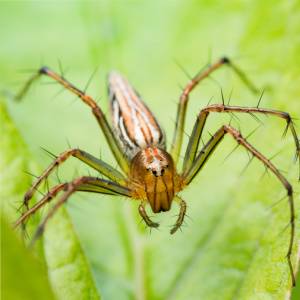
- Are they dangerous to my family and pets? Yellow spider bites aren't fatal, but they are serious. The symptoms of a yellow sac spider bite are very similar to the symptoms of a brown recluse bite.
- Where do they hide in my house? You'll find them in flattened silk tubes between the wall and the ceiling. These tubes serve as retreats rather than webs; yellow sac spiders hunt their prey at night.
- What do yellow sac spiders eat? They eat other spiders and aren't afraid to tackle larger species than they are.
What attracts Aurora, CO, spider species into my home?
The number one reason why spiders come into a home is the home has a deeper bug problem somewhere in the house. Spiders could hint that there's a large roach or ant population somewhere in the home that you're not seeing.
Access is the second attractant. If you have cracks in your foundation, gaps around your windows, or holes in your walls, spiders will make their way inside and set up shop.
How can I keep spiders away from my Aurora, CO, home?
There are a few steps you can take.
- Keep your home clean; removing a food source for prey insects discourages spiders as well.
- Keep debris piles and wood piles away from your home. Keep your grass trimmed. Plant shrubs away from your home and foundation.
- Seal up cracks and crevices.
- Schedule a free inspection with our team. We can help you discover whether you have spiders or prey insects in your home.
Spiders can enter any home. They don't care how much money you make or who lives inside. Take steps to get rid of them before they multiply.
How to Get Rid of Spiders in Your Aurora, CO Home
If you find one spider, trap it under a Tupperware and bring it outside.
Are you seeing multiple spiders or are you contending with cobwebs? We'll help you get rid of the spiders and the other bugs that are surely in your home—the ones that drew them inside to feed.
Contact us to schedule an inspection today.
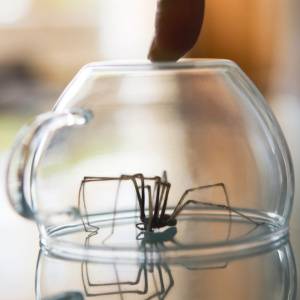
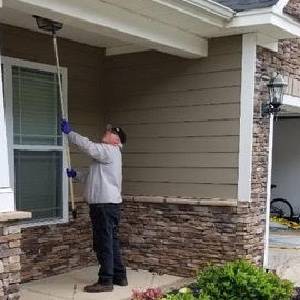
Our Aurora, CO Service Areas
We serve the Front Range of Colorado, from Wellington in the north to just outside of Colorado Springs, including Arvada, Boulder, Brighton, Broomfield, Castle Rock, Centennial, Commerce City, Denver, Erie, Frederick, Hudson, Lakewood, Littleton, Longmont, Loveland, Parker, Thornton, Westminster, and Windsor.

